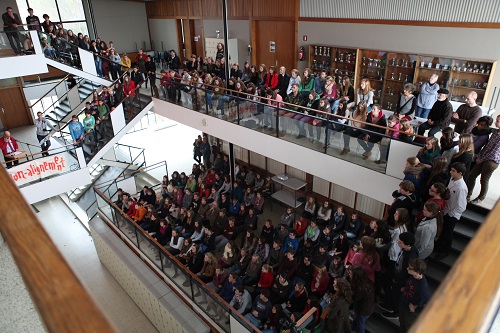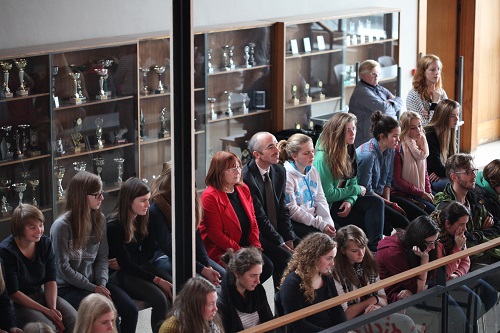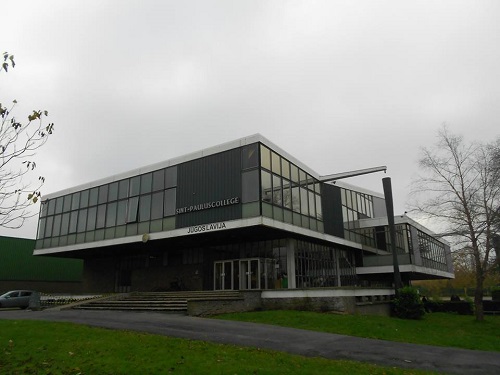
In the former pavilion of Yugoslavia of the architect Vjenceslav Rihter, designed for the Brussels World’s Fair in 1958, transported and transformed in the high school of the Flemish linguistic community (St Paulus College) in Wevelgem (West Flanders) 1960, on Friday 29th November 2013 begins a one-year project „Thinking Yugoslavia in Europe Today“. 220 pupils of this school, of the age 14 to 16, will work on this project all through the school year 2013/2014. Within the framework of the project „Thinking Yugoslavia in Europe Today“, an artistic exhibition with the same name, whose realisation was supported by the Embassy of the Republic of Serbia in Belgium, will be officially opened in the great hall of the school in Wevelgem. The exhibition includes canvas prints of the works of sculptor and painter Vojin Bakić: sculpture „Stevan Filipović“ in Valjevo (Serbia) and the monument „Victory of the revolution of the peoples of Slavonia“ in Kamenska (Croatia) and other works. The exhibition will last until 20th May 2014.
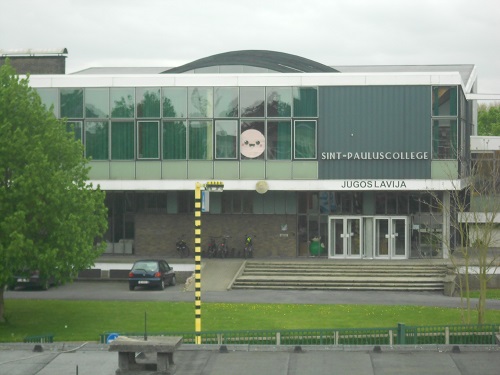
Driven by the name „Yugoslavia“, largely incomprehensible to the pupils, that still stands on the building of the school/pavilion below its name, the pedagogical team of the Flemish high-school lead by the director Henk Milecamp decided to dedicate a one year multidisciplinary programme of the school to the studying of Yugoslav uniqueness. The project, involving a pedagogical team of 7 professors (geography, history, French language and literature, music and arts) covers the following topics: anti-fascism, equality, social justice, emancipation, self-government (break-up with Stalinism), Yugoslav surrealism, Yugoslav musical and artistic modernism - in short, uniqueness of the „architecture of the Yugoslav project", in its poetic and political form. Having in mind the unbreakable tie between anti-fascism and the European identity, and the central role of history of the antifascist struggle of the nations of Europe in the educational curricula of the member states of the European Union, this Belgian pedagogical institution gladly embraced the proposal to revive the memory of Yugoslav anti-fascism and other unique facets of the Yugoslav project.
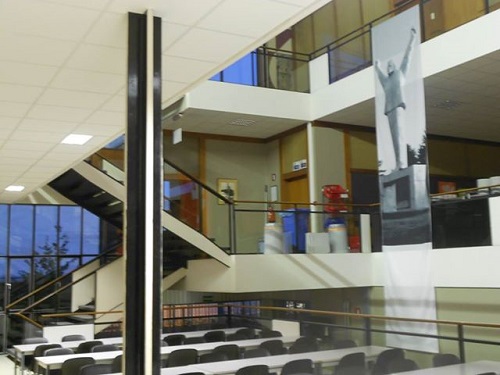
Serbian, Yugoslav, Belgian and German artists, writers and researchers, gathered around the publishing house „Edicija Yugoslavia“, artistic collectives „Emigrative art“ from Belgium and „Škart“ from Serbia, worked on the conception and organisation of the project. Renown Belgian documentary film-maker Sarah Vanaght, in cooperation with the director Nina de Vroome, is making a film about this one year project dedicated to Yugoslavia in Wevelgem.
This educational programme presents a continuation of the one-semester workshop „Thinking Yugoslavia 20 Years Later“ realised in November 2011 on the International Law Department of the ULB.
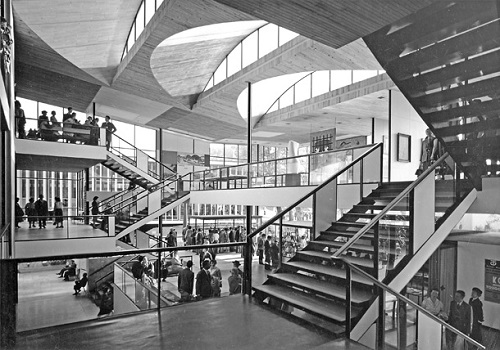
220 pupils of the (St Paulus College) amongst other invitees will attend the official opening of the exhibition and project this Friday. On the same day, a „Yugoslav“ course will be organised by Ivana Momčilovic (Belgium), Ljubomir Jakić (Belgium), Slobodan Karamanić (Germany). The opening of the exhibition will include musical programme performed by the German artists Homan and Underdorben, screening of the clips of the Milutin Kosovac's movie from 1971, "19 girls and a sailor", with Jane Birkin and Serge Gainsbourg playing the role of Yugoslav partisans, screening of Mirza Idrizović's film "Azra" from 1988, with a famous Serbian actress Dara Džokić playing the main character in the film about gender empowerment, concert of the violinist Dejana Sekulić playing the works of the famous Serbian and Yugoslav composer Ljubica Marić, whose music „illustrated“ the Pavillion of Yugoslavia of the Brussels World’s Fair 1958.
The Pavilion of Yugoslavia (coeval of the famous symbol of Belgium and Brussels – the Atomium) was amongst the smallest in the World's Fair, but according to the opinion of architects from around the World at the time one of the most impressive. Made from glass and iron it had the goal to represent the modernism of the Yugoslav ideas as well as to promote tourism and scientific discoveries of Yugoslavia at the time. The Pavilion of Yugoslavia is one of the few conserved pavilions from the World's Exhibition in Brussels.
